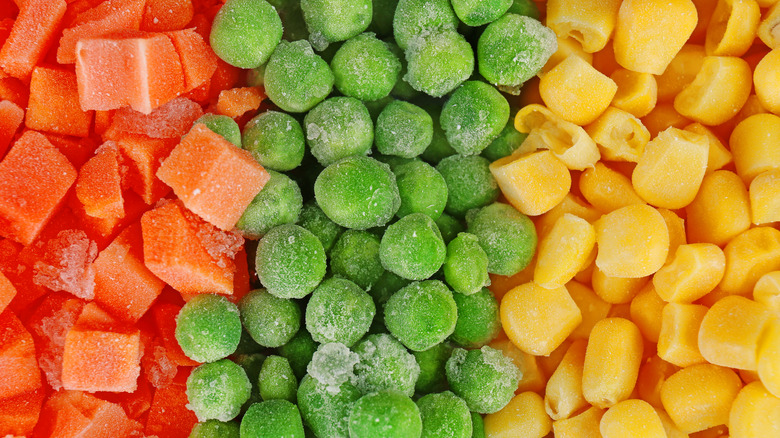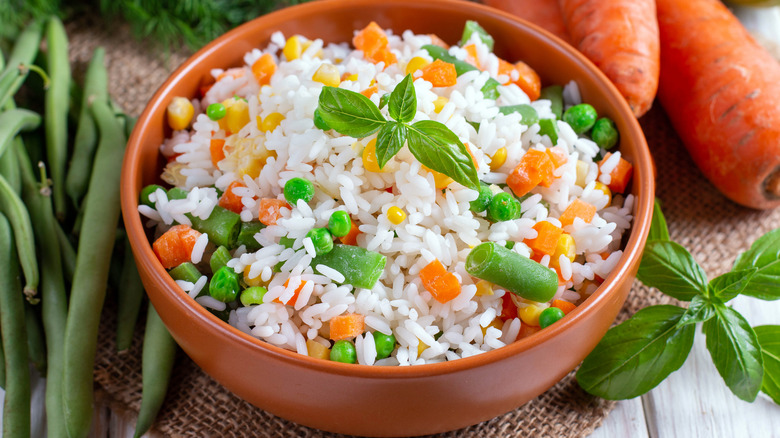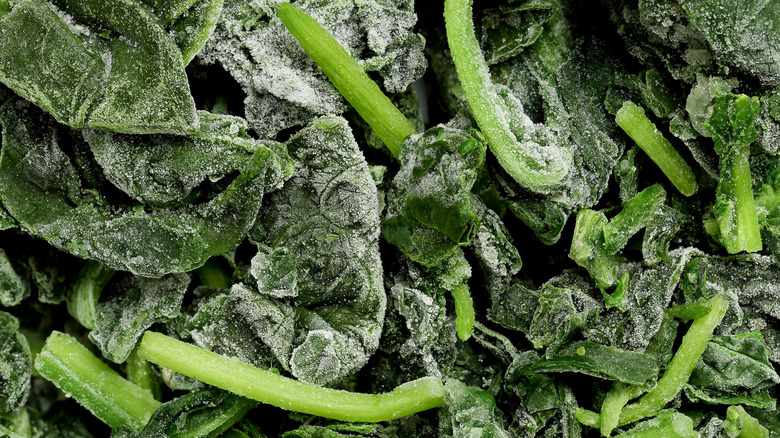It's A Mistake To Think All Frozen Veggies Need To Be Cooked
While it's nice to have fresh vegetables, it's not always farmers market season. In fact, it's perfectly okay to rely on frozen vegetables when fresh options aren't available. Sometimes, frozen veggies are even preferable to their fresh counterparts, plus they're usually pre-cut and ready to use. They're picked at peak ripeness and flash-frozen, often on the day of harvest, retaining all the vitamins of fresh produce. Moreover, many frozen vegetables don't even require cooking, depending on your intended use.
Most frozen vegetables are at least partially cooked before freezing, so cooking them again after letting them thaw isn't always necessary. Like many fresh veggies, numerous frozen varieties are not only perfectly edible uncooked, but some can be absolutely delicious on their own, or add a delightful texture to your meal. Simply toss them into your salad for a burst of flavor, or incorporate them into a smoothie or sauce to save a step.
Frozen vegetables that don't need to be cooked
There was a time when the frozen vegetable aisle offered only peas, carrots, and bricks of cooked spinach, but today, you can find an array of tasty varieties. Along with broccoli, corn, and pearl onions, it's not unusual to come across frozen butternut squash, shiitake mushrooms, and even riced cauliflower. This abundance of different frozen veggies makes it easier than ever to incorporate more plant-based ingredients into recipes, as you don't have to worry about fresh produce spoiling in the refrigerator before you have a chance to use it. It's even more convenient when they don't require cooking.
Peas, one of the most common frozen vegetables, top the list of frozen foods that you can eat raw — which makes sense, considering fresh peas also don't need to be cooked. You can add frozen peas directly to macaroni salad, or include them in the food processor when making hummus for a fresh twist. Similarly, frozen corn can be used in a salad or tossed into a bowl of warm rice. In fact, frozen corn is often sweeter than most fresh corn. If you need corn or peas that are thawed but not cooked, simply pour them into a strainer and run cool water over them for a few minutes.
Don't forget about smoothies
One of the easiest ways to use uncooked frozen veggies is in smoothies, similar to how many people use frozen fruit. Adding a handful of frozen spinach to your next green smoothie recipe is a fantastic way to incorporate calcium and color into your morning routine, but don't stop there. Frozen yellow squash, zucchini, cauliflower, avocado, sweet potatoes, winter squash, and beets are also excellent in smoothies. The advantage of using frozen vegetables in smoothies is that they're often already cut into small pieces, and adding them to the blender while they're frozen helps thicken the mixture.
If you're concerned about eating uncooked frozen veggies, don't worry too much. Almost all frozen vegetables are blanched in hot water before being flash frozen and packaged, which kills surface bacteria. As long as you don't leave your frozen vegetables out at room temperature for too long, which can lead to the growth of foodborne bacteria, you can feel comfortable eating your frozen veggies straight from the bag. So, next time you're at the grocery store, stock up on some frozen vegetables; it's an incredibly easy way to add extra vitamins and minerals to your diet.


